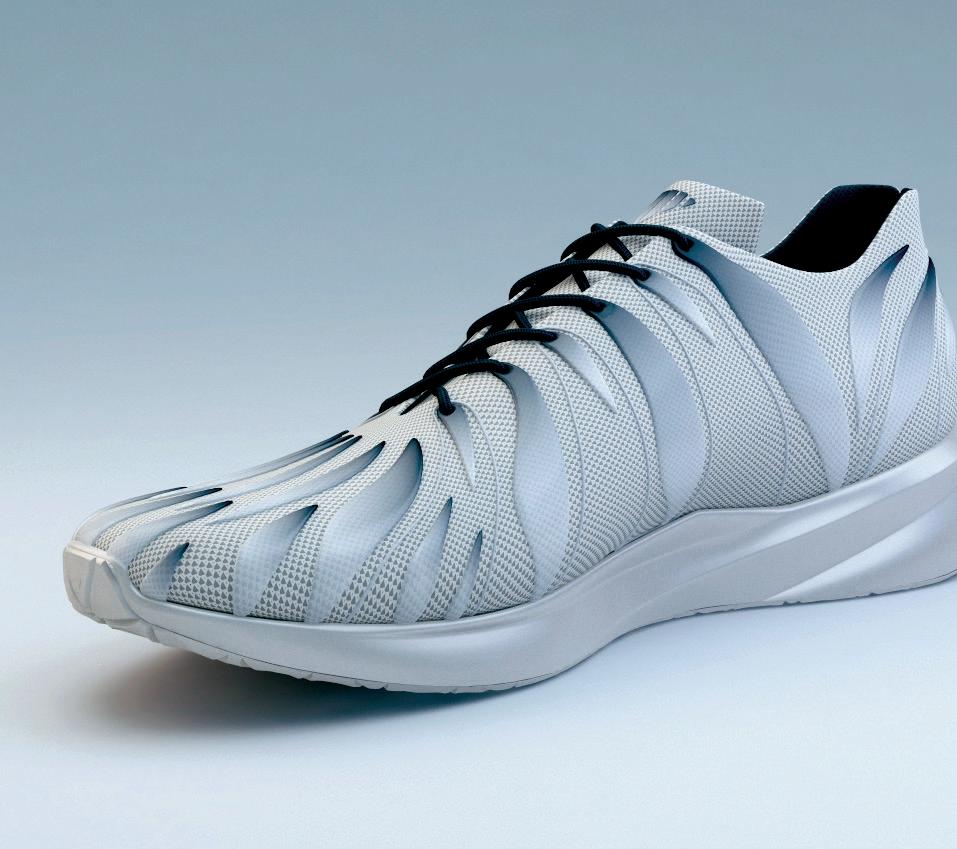
8 minute read
SMALL-FORMAT, BIG POTENTIAL
SMALL-FORMAT, BIG POTENTIAL WORDS: SAM DAVIES


In the summer of 2017, Formlabs announced its plans to replicate the success it had in bringing desktop Stereolithography platforms to market with Selective Laser Sintering (SLS).
It was a signifi cant development that saw Formlabs join Sinterit and Sintratec in supplying an SLS system in the sub-$20k price range. Four years on, the Fuse 1 – as with other ‘offi ce-friendly’ SLS platforms – is now well-established on the market.

So, where do the opportunities lie for the technology, what are its limitations and are the machines really suitable for the offi ce?
MACHINIST MOTIVATION
Though Formlabs’ entry into smallformat SLS captured the attention in 2017, the pioneers of the ‘offi ce-friendly SLS’ movement came in the form of Sintratec and Sinterit two years earlier. The former brought to market the Sintratec Kit (and has since launched the S1 and S2 systems), while the latter launched its Lisa platform (with the Lisa Pro and NILS 480 following).
Sinterit was founded by a trio of engineers – including CTO Michał GrzymałaMoszczyński – to address some of the problems it had identifi ed in the design and manufacturing space. The solutions to those problems have come in the form of the Lisa for prototyping and education and the Lisa Pro for functional prototypes and research, both of which fall under the $20k price banner, with the recently launched NILS 480 addressing industry needs. Across all three models, the company has installed 1,000 units.

“Our goal was to make Selective Laser Sintering available to a wide range of users,” Grzymała-Moszczyński tells TCT. “We were trying to answer the needs of other engineers, working on commercial projects, as well as science. We discovered that SLS is a missing puzzle for other branches, from medicine to research, automotive to electronics. It was the right direction. As you can see, other companies followed us designing their own compact SLS systems.”
Though it took Formlabs sometime longer to execute its SLS R&D eff orts, the company has made signifi cant strides this year, attracting the interest of Brose, Hypertherm and Partial Hand Solutions after the launch in January. Starting from around $18,499, the Fuse 1 is said to be designed for minimal upkeep and uses patent-pending Surface Armor technology to combat the ‘orange peel’ surface texture problems often associated with SLS. It is also supported by a materials portfolio that includes PA 12 and PA 11, as well as the PreForm print preparation software, which Jacob Wilson at Additive-X – a Formlabs reseller – suggests is a key selling point because of its familiarity with customers.
Such familiarity has certainly seen Fuse 1 users put the machine to good use per the company’s Engineering Business Product Lead Kathy Bui.

“The type of customers that we’ve gotten for the Fuse has been largely for end use parts,” she explains. “We have a decent amount of healthcare customers who are using this for prosthesis and orthotics and then we also have people who are making limited run production of parts. We’re seeing more and more people use SLS for actual production and not just prototyping.”
‘MORE THAN A MAYBE’
Despite the launch of the NILS 480 representing a step towards more ‘industrial’ applications, one of Sinterit’s most renowned users is Rawlplug – the company known for developing the world’s fi rst wall plug – who has deployed the machine to meet its prototyping needs. By bringing 3D printing in-house, the company has reduced the lead time for its









SHOWN:
PARTS PRINTED WITH THE FORMABS FUSE 1
rapid3devent.com
MAY. 17-19. 2022.

TCF CENTER. DETROIT.


SHOWN:
THE FORMLABS FUSE 1 MACHINE
prototype parts from two weeks to two days after purchasing the LISA Pro machine.
Streamlining design cycles was among the foremost aims when developing these machines. The driver was taking the highquality capabilities and material options of SLS and scaling them down into a smaller package that is aff ordable and ‘offi ce-friendly.’ This would allow designers to sit at the desk, model parts in CAD and rapidly prototype them on a machine next to their workstation. 3DPRINTUK CEO Nick Allen, however, doesn’t believe that to be practical with SLS.
“The term ‘offi ce-friendly’ should be seen as ‘workshop friendly’,” he says. “I wouldn’t want one in an offi ce – the same goes for other non-SLS 3D printers; none of them have been fun to sit next to. With SLS, the big one is dust and no matter how ‘dust friendly’ or ‘controlled with laminar air fl ow’ the machines are, the dust still gets everywhere.”
Having expanded 3DPRINTUK’s fl eet of SLS systems to nine last year, Allen has been keeping a close eye on the release of smaller-format machines from the likes of Formlabs, Sinterit, Sintratec and Wematter. He’s not yet felt compelled to invest in the technology for his service bureau. But Coloradobased Precision Parts Fast has.
“We did extensive research on various [smaller SLS] platforms, and we liked the Fuse 1 and user interface the most,” off ers Precision Parts Fast President & COO Brian Korbelik. “First, it is properly priced for the value you receive, and it is easy to operate. Secondly, it has a fairly fast print time. Although the lasers are not especially powerful or quick, we are able to stack parts in the chamber to save our customers time and cost. Also, the build chamber is fairly large for a smaller format printer.”
“They do not have the capacity/ speed that the industrial machines have,” Allen explains of his stance. “Some [cigarette] packet maths on the Fuse 1 vs an EOS P110 got me a build time of 100 hours printing on a Fuse 1 to match 24 hours for a P110, so pound for pound the P110 is the better option if you are doing high volumes. That’s not to say that the Fuse 1 is not a good machine, it’s more to say that if you’re a bureau, it’s not the right choice.”
Precision Parts Fast invested in the Fuse 1 because of its ability to produce complex geometries and intricate features, as well as its suitability for small-to-mid batch and high mix production runs for customers in the electronics, consumer goods, and manufacturing sectors. This, the vendors will feel, is where their machines can be of use to service providers.
“I think that it is benefi cial for service bureau to look into some of the smaller options because of capex upfront, fi rst of all, and then second, for a lot of service bureau, you want to think about incremental scalability and capacity,” Bui says. “If you buy an industrial printer, but it’s uptime is only 5%, a lot of capacity is going to waste. If you buy a printer like the Fuse 1, you can scale incrementally as your demand increases over time.”
The same applies for design and manufacturing brands, where the vendors of small-format SLS believe there is now greater potential to bring 3D printing in-house, whether it be for prototyping or more. Being able to process nylon materials, per Bui, is among the main reasons why users have been able to ‘jump directly to end-use parts’ with the Fuse 1, while she has also seen Brose demonstrate the ability to produce jigs and fi xtures ‘just in time’ by bringing small-format SLS under its roof. Allen, meanwhile, suggests that companies spending more than £25k a year on SLS parts - £50k if they require fi nishing – should be exploring the potential of insourcing the technology, while Wilson notes the cost and time-saving benefi ts of using the same machine to prototype and produce parts can be signifi cant.
Sinterit suggest that users can achieve a return on investment within 40 days with their newest machine and claim that ‘most of the world’s car producers’ have a Lisa or Lisa Pro system in their labs already. As such, they can’t comprehend a future whereby manufacturers aren’t utilizing small-format SLS.
“Having in-house SLS 3D printers is a huge step into productivity,” says GrzymałaMoszczyński. “It saves money, time and is crucial if you don’t want to share your project with third-party companies. It is more than a considerable option. I cannot imagine that, in a few years, a serious design or manufacturing company would not have a well-implemented SLS technology in-house and retain any competitiveness on the market.”










